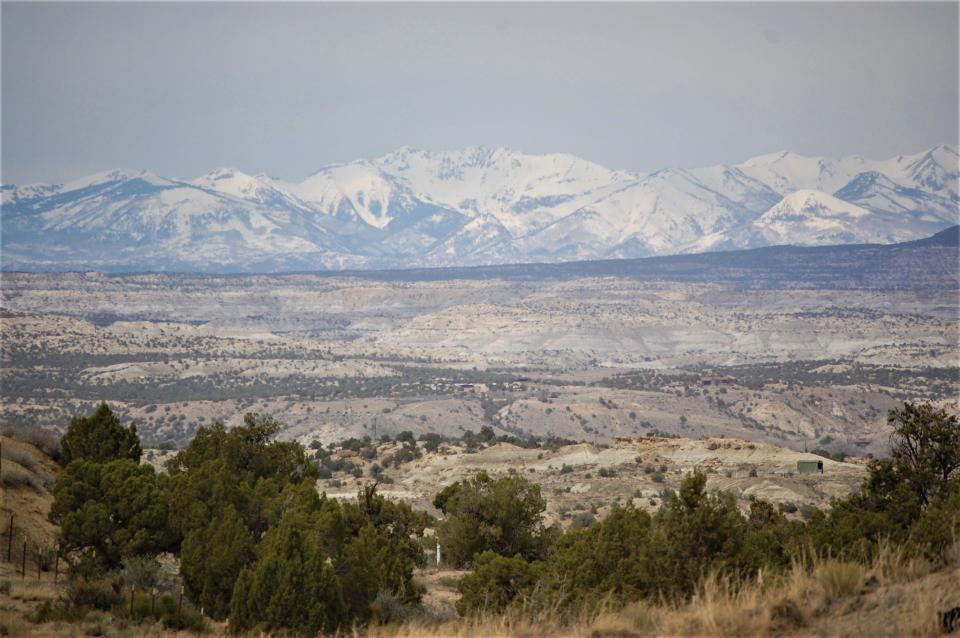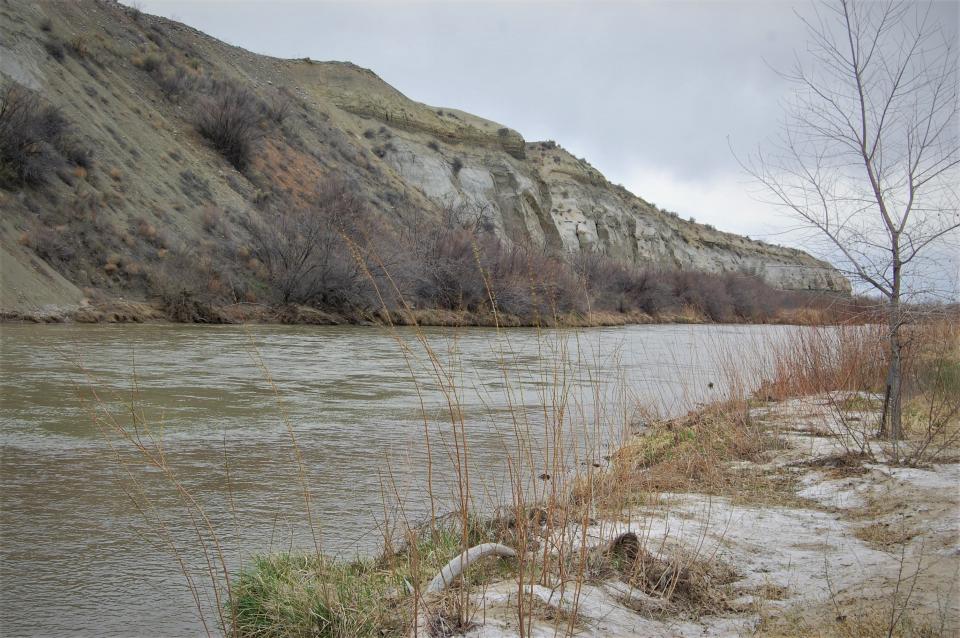Conditions favorable for healthy runoff season this spring, water official says
Circumstances have aligned to set up an uncharacteristically rosy forecast for runoff season this year in San Juan County, according to a local water official, although he cautioned that conditions could change quickly if things turn unseasonably warm.
Aaron Chavez, the executive director of the San Juan Water Commission, said it was still a little too early to tell exactly what kind of runoff can be expected from the San Juan Mountains of southwest Colorado into the Animas and San Juan rivers and other streams that flow into San Juan County. But he was optimistic that northwest New Mexico could see a bountiful year compared to what it experienced over the past decade or so.
Most encouraging to Chavez was the condition of the snowpack in the San Miguel, Dolores, Animas and San Juan rivers watershed in southwest Colorado. According to the U.S. Department of Agriculture’s SNOTEL website, which measures the snow-water equivalent in the basin, that snowpack is at 180% of normal — the highest figure of any of Colorado’s seven basins.
“It is an encouraging figure, and now the question is, ‘How is it going to come off the mountain?’” Chavez said.

The best scenario, he said, was for the region to experience a cool spring, which would allow the snowpack to melt gradually, avoiding a sudden, mass snowmelt and rapid evaporation. He said his agency is most concerned about the status of the Animas River, which supplies water to the most users in the county.
More: Winter storms bring more snow, wind, freezing temperatures to San Juan County
Chavez cited early projections showing that river and stream flows in San Juan County over the next two and a half months are expected to be very healthy, perhaps even robust. Flows are expected to reach 91% of normal in April before increasing sharply to 161% in May and 170% in June.
A series of winter storms that rolled through the Four Corners region from shortly after Christmas through the middle of March didn’t just dump snow in the San Juan Mountains. Those systems also yielded a considerable amount of rain and snow at lower elevations throughout the region, helping replenish the area’s soil moisture content.
According to the U.S. Drought Monitor, the soil moisture content for most of San Juan County and southwest Colorado is at or near 100% of normal. That figure delights Chavez, because he knows it means that more of the moisture that has fallen on that territory will wind up in rivers and streams, rather than being absorbed quickly by the parched ground.
Those healthy soil moisture conditions also were aided by a strong monsoon season last summer, which meant much of the region already was in relatively good shape by the time those winter storms arrived. The combination of those monsoons and snowstorms has meant close to half of San Juan County is free of any drought or abnormally dry designation, according to the U.S. Drought Monitor.

That is a stark contrast to conditions just three months ago, when only a little more than 8% of the county was in that position. And a year ago at this time, the entirety of the county classified by the U.S. Drought Monitor as being in a drought or abnormally dry.
While conditions are pointing toward a very good runoff season, Chavez sounded a note of caution, referring back to his concern about how quickly the snowpack melts. He said he was pleased to see the cooler-than-normal temperatures that lingered in the area through March and early April, but he was less pleased to see conditions warm up into the low 80s earlier this week.
“That’s what we want,” he said, referring to the cooler temperatures. “We don’t want big storms to come in dump a bunch of rain with warm temperatures.”
Rain would cause the snowpack to melt even more quickly, he said, hastening and intensifying the runoff instead of stretching it out over three months.
More: Second annual Polar Bear Plunge at Lake Farmington draws 70 participants
“Cooler for longer is better for everyone for snowpack reasons,” he said.
In any event, Chavez said he knows better than to prematurely celebrate this year’s wet weather as the end of a megadrought that has plagued the Southwest for more than 20 years. He likens the current conditions to only a temporary improvement.
“Exactly — that’s how I look at it, a reprieve,” he said. “It’s brought us some short-term relief, but the long-term issue is still there. To be out of this (moisture) deficit, we need multiple years of snowpack like this.”
Mike Easterling can be reached at 505-564-4610 or measterling@daily-times.com.
Support local journalism with a digital subscription: http://bit.ly/2I6TU0e.
Others are reading:
Man faces second-degree murder charge in connection with death of Crouch Mesa Woman
Public forum planned at Farmington Civic Center to address benefits of volunteerism
This article originally appeared on Farmington Daily Times: Runoff season in San Juan County could be robust, water official says

